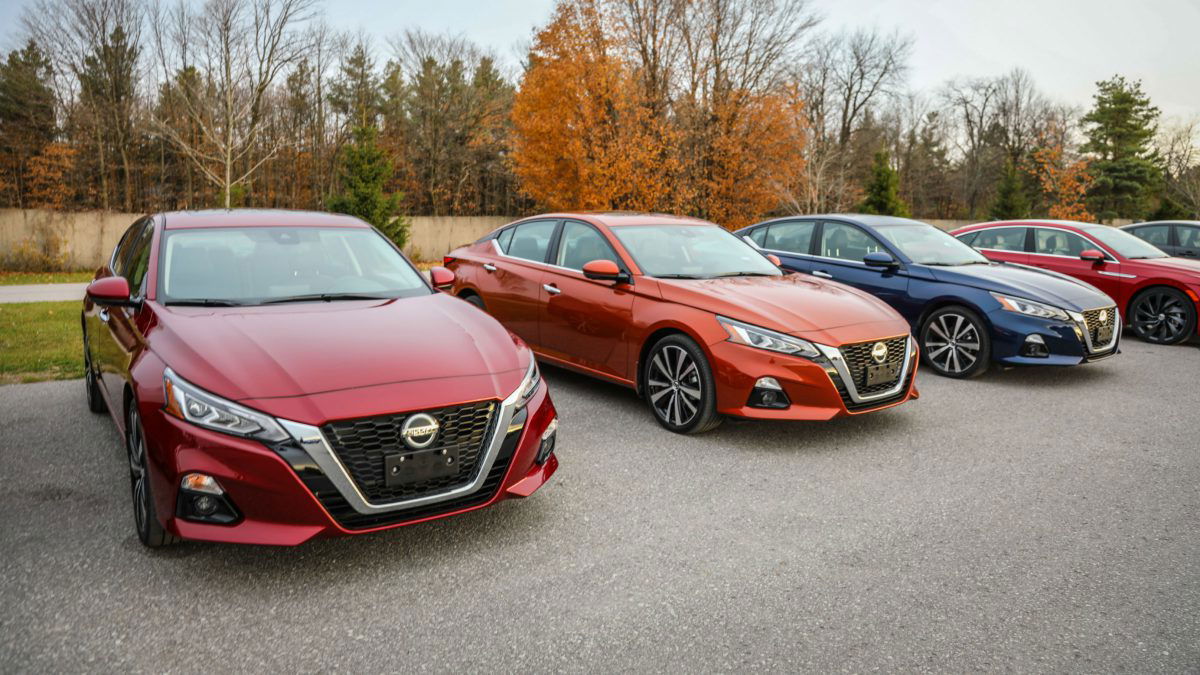 Find Out: How to Choose the Best Car
Find Out: How to Choose the Best Car

Advertisement
If you’re new to buying cars or haven’t made an auto purchase in years, it may be hard to know where to begin. Finding the car of your dreams takes a little research and planning. Let’s find out how you can own the car you’ve always wanted.
Finding the “right car” depends on what you expect from a car and who you are. If you need a vehicle for your daily duties, the functionality should always trump flash.This may seem like a rather simple task at first. After all, you likely already have a preference. But, once you start thinking about it, you may find that it’s not as straightforward as it seems. But, that’s alright, because our quick guide to the different types of vehicles will help you choose the best car for you.

COMMON TYPES OF VEHICLES
The first step towards picking the right type of vehicle is knowing what type of vehicles even exists in the Canada auto market. Here are the most common types:
Sedans: A sedan is essentially a passenger car that has four doors and two rows of seating with five seating spaces in total. The rear seats can usually accommodate two adults or up to three children. The cargo compartment is disconnected from the cabin and has a windowless lid.
Hatchbacks: A hatchback is a passenger vehicle that has a rear door, which is called a hatch. You can lift the hatch up to allow access to the cargo compartment. Similar to sedans, hatchbacks have two rows of seating and allow up to 5 people to sit in them. The difference is that the cargo area and the cabin are connected.
Coupes: A coupe is a passenger car with two doors and a fixed roof. It is usually shorter than a hatchback and a sedan and can feature either one or two rows of seating. Rear seats, even if they are present, are usually not comfortable enough for adults to be seated, which means this area can serve as a space to carry light items. The cargo compartment is disconnected from the main cabin.
SUVs: Sports utility vehicles put a special emphasis on cargo capacity and cabin space. Depending on its configuration and size, the vehicle may have between two to three rows of seating and can seat between 4 to 8 passengers comfortably. The cargo area is usually connected to the cabin and the space can be accessed by lifting the rear door.
SET YOUR BUDGET
Unless you’re planning on paying cash for your car, you’ll need to think about financing options. As a general rule, your monthly car payment should not exceed 15% of your take-home income. A used car may be less expensive, but the same rule should apply. You should also factor in an additional 7% of your monthly income to cover fuel and insurance costs. By setting your budget beforehand, you’ll be able to negotiate your next car or truck efficiently.
SET UP A TEST DRIVE
If you’ve found a car that seems to be a good fit for you, call, text, or email the car dealership to schedule a time for a test drive. It’s best to recommend test-driving at least three different cars so that you don’t limit your options.
IMPORTANT FOR USED CAR
If you are shopping for a used car, you’re likely looking to get a good deal on the car you purchase. Fortunately, this is not too hard to achieve as long as you’re willing to do a little groundwork and be patient. But what exactly should you be looking out for during the inspection? Here’s all you need to know.
Engine
Check the engine light: The most obvious thing that you want to watch out for when buying a used vehicle is the check engine light. If there’s an issue, this light will typically appear on the gauge cluster.
Squealing noises: When you start the car, look out for squealing noises, which could point to a worn serpentine belt. Erratic noises may also be caused as a result of a dirty airflow sensor, faulty fuel injectors, vacuum leak, or worn spark plugs.
Colored exhaust smoke: It’s also a good idea to check the color of the smoke that’s emitted from the exhaust. Blue smoke could be caused due to burning oil, black smoke could indicate the engine is getting too much fuel, and so on.
Drivetrain
Humming: Once you are on the road, listen for excessive humming sounds, especially when driving through corners or straight. If you hear anything, stop the car and check the tires for signs of uneven wear or cracks.
High-pitched whine: It’s normal for cars to get noisier as the years go by, but if the car makes a high-pitched whine when it is being accelerated, the noise should certainly not be ignored.
Brakes
Mushy brakes: If the brake pedal feels a little too mushy when you are bringing the car to a stop, the brake fluid likely needs changing. It’s also a good idea to check the brake lines in this case.
Grinding metallic sound: If you hear a grinding metallic noise when applying the brakes, the cause is likely worn brake pads, so pay attention to such noises.
Electrical System
Faulty lights: It’s a smart idea to inspect the car during the day, but ensure you don’t forget to check out if all the lights are working. Remember that it can be expensive to replace lights.
Unresponsive buttons: Cars today come with a plethora of features, so you should check whether all of them work as they should. From stereo to air conditioning, don’t leave anything unchecked.
PICK YOUR CAR
After test-driving cars, the choice should be clear. If it isn’t, it’s best to sleep on it. In the morning, you may have your answer. Once you’re sure, you can buy the car of your dreams.